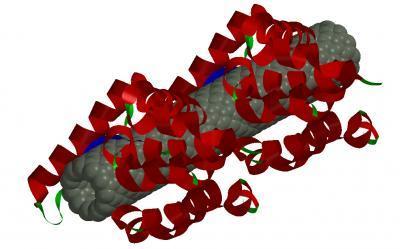One of the strongest materials in the world has been combined with one of the most powerful materials capable of killing bacteria in a new research project that produces durable surfaces capable of killing bacteria

One of the most powerful materials in the world has been combined with one of the most powerful materials capable of killing bacteria in a new research project that produces durable surfaces capable of killing bacteria. These surfaces could be used in a variety of applications in home appliances, medicine, aerospace engineering and national security. Now, there is a report on this important new class of more effective disinfectant surfaces.
In the study, the two scientists Virginia A. Davis and Aleksandr Simonian and their colleagues pointed out that concern about the effect of contaminated surfaces on the spread of infections accelerated the search for better antimicrobial coatings.
Scientists sought to harness the powerful natural enzyme known as lysozyme (lysozyme, an enzyme found in body fluids as well as in various tissues and cells, which dissolves bacteria by breaking down their cell wall) in this quest. However, they were unable to find a substance strong enough to bind the enzyme to it in the desired way for long periods.
Their solution involves the first successful fusion of lysozyme with single-walled carbon nanotubes (SWNTs). With a diameter about one-fifth that of a human hair, these nanotubes are exceptionally strong and able to hold the enzyme in place, while other coatings lose their antibacterial activity over time.
"The results of this study present the important possibilities for the molecular design of new materials that combine the structures of carbon nanotubes and natural biopolymers," the article notes. "These resistant bactericidal materials hold significant promise in applications related to medicine, space engineering, public transportation, electrical devices and sports products."

8 תגובות
The bacteria will develop resistance
If we look at grains of sand, which are a basic material used to build and prepare relatively strong materials, then the particles or grains there are about a millimeter in size. Nanotubes with a size of several thousand nanometers are actually microtubes and the size certainly makes sense to me for it to be used as a coating for surfaces.
I don't understand it, but it seems to me that from the point of view of the creature the problem is actually to create especially small things. Either way, nano or micro, it seems that such coatings can be used on other materials (certainly with the help of adhesives or maybe even some chemical reaction that will bind the microtube to the surface in a permanent and strong bond.
So it seems very problematic for production, because the carbon networks would prefer to first roll into the narrower and more stable tubes...
Yes, it's a few thousand nanometers.
A carbon nano tube with a diameter of one fifth of a human hair is not considered a huge diameter in nanometer dimensions?
Recently we hear a lot and read a lot about nanomaterials and their new applications in science. Their use today seems to be everywhere. I wonder how they will talk about our scientific era in fifty years and the widespread use of nanomaterials. In a few years will they discover the destructive effects of these substances? Will it turn out that their environmental impact is destructive? Or are these really small and good-hearted materials that work together for the sake of science and humanity in every field?
Shabbat Shalom,
Ami Bachar
Zzzzzzzzz of course. Weld the enzyme to the tube with a carbon burner and the energy is provided by a 9 volt battery.
Wow, what a genius idea to combine nanotechnology and molecular biology.
How did they connect the enzymes to the nanotubes? Covalent bond? And how do you provide the enzymes with the energy needed to activate them?